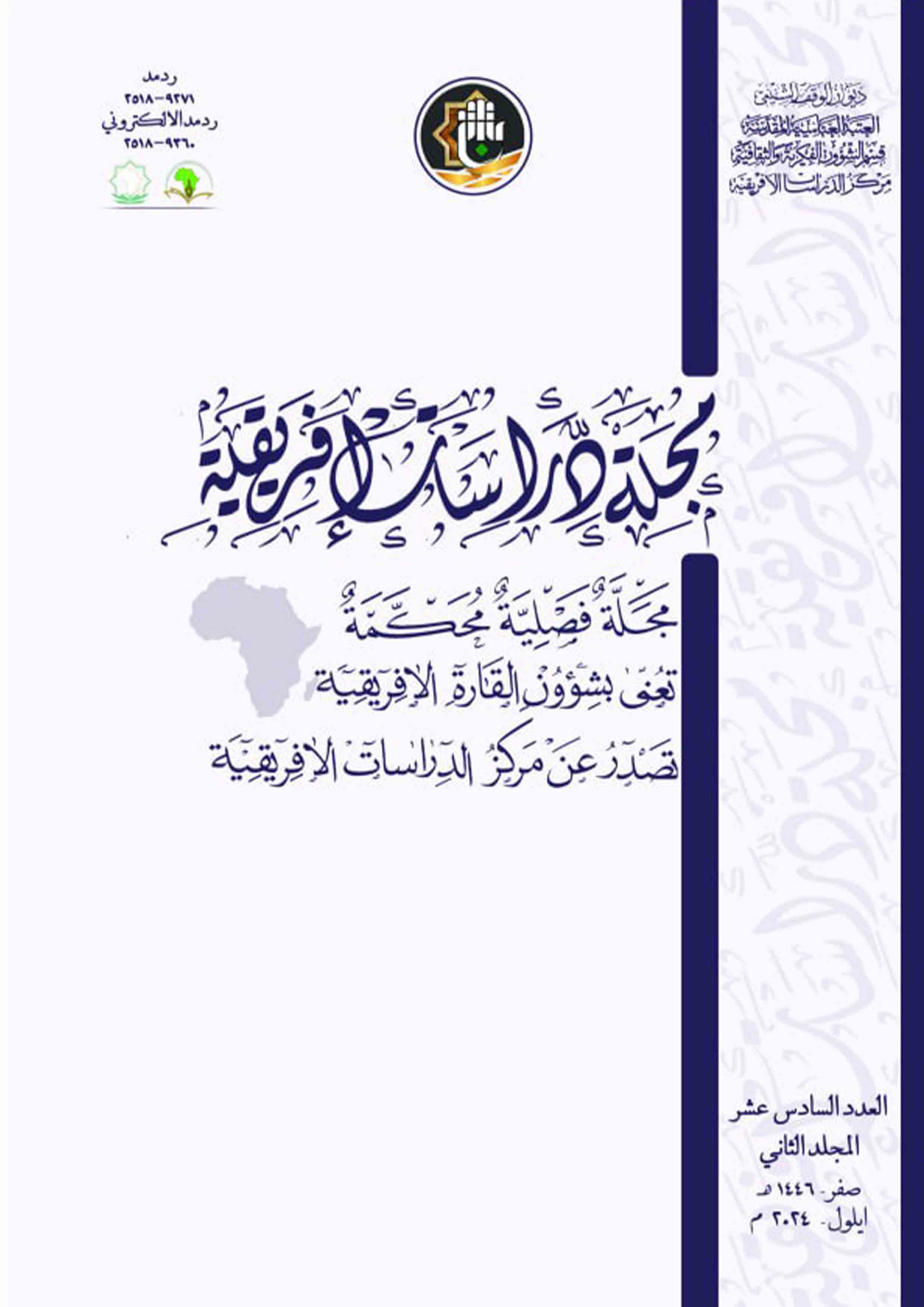Abstract
Timbuktu is one of the most famous and oldest Islamic
cities in sub-Saharan Africa. It was the most important
commercial city in these areas. Muslims built buildings
and religious facilities there that testify to the extent
of the genius of Muslim architecture in formulating
various building and construction materials in the various
environments that Islam entered. In addition to many
mosques and modern chapels in Timbuktu, it includes the
ancient city is a group of archaeological religious buildings
that expressed the Islamic architectural style in general,
and the style of the cities of Western Sudan in particular.
These mosques reached as much fame as the mosques of
Cairo, Kairouan, and Fez in Morocco. According to the
Islamic urban perspective, the mosques were the central
building block in the emergence of cities, and this was
the case in Timbuktu, where these mosques arose early,
and then urbanization began to revolve around them, and
extend to various parts of the city. These mosques bear
witness to the ingenuity of the construction workers in
Timbuktu, in adapting traditional building techniques to
new technologies. "Modern" in restoration and renovation
in order to prolong the life of these buildings, which have
become vulnerable to loss and collapse due to bad weather
conditions and the obsolescence of building materials
today. The three major mosques in the city are still in use
today, and also benefit greatly from annual maintenance
practices and attention. The Sankore Mosque, the Djingiri
Pir Mosque in particular, and, on an irregular basis, the Sidi
Yahia Tadlesi Mosque are also being taken care of.
cities in sub-Saharan Africa. It was the most important
commercial city in these areas. Muslims built buildings
and religious facilities there that testify to the extent
of the genius of Muslim architecture in formulating
various building and construction materials in the various
environments that Islam entered. In addition to many
mosques and modern chapels in Timbuktu, it includes the
ancient city is a group of archaeological religious buildings
that expressed the Islamic architectural style in general,
and the style of the cities of Western Sudan in particular.
These mosques reached as much fame as the mosques of
Cairo, Kairouan, and Fez in Morocco. According to the
Islamic urban perspective, the mosques were the central
building block in the emergence of cities, and this was
the case in Timbuktu, where these mosques arose early,
and then urbanization began to revolve around them, and
extend to various parts of the city. These mosques bear
witness to the ingenuity of the construction workers in
Timbuktu, in adapting traditional building techniques to
new technologies. "Modern" in restoration and renovation
in order to prolong the life of these buildings, which have
become vulnerable to loss and collapse due to bad weather
conditions and the obsolescence of building materials
today. The three major mosques in the city are still in use
today, and also benefit greatly from annual maintenance
practices and attention. The Sankore Mosque, the Djingiri
Pir Mosque in particular, and, on an irregular basis, the Sidi
Yahia Tadlesi Mosque are also being taken care of.
Abstract
تعد أهم مدينة تجارية بهذه البقاع وقد شيد المسلمون فيها عمائر
ومنشآت دينية تشهد بمدى عبقرية المعمار المسلم في صياغة مختلف
خامات البناء والانشاء بمختلف البيئات التي دخلها الإسلام
فبالإضافة للكثير من المساجد، والمصليات الحديثة بتمبكتو، تضم
المدينة القديمة مجموعة من العمائر الدينية الآثارية، التي عبَّت عن
الطراز المعماري الإسلامي بصفة عامة، وطراز مدن السودان الغربي
على وجه الخصوص، وقد بلغت هذه المساجد من الشهرة ما بلغته
مساجد القاهرة، والقيروان، وفاس في المغرب، وقد كانت المساجد
وفقاً للمنظور الإسلامي العمراني هي اللبنة المركزية في نشأة المدن، وقد
كان الأمر كذلك في تمبكتو، حيث نشأت هذه المساجد مبكراً، ومن ثم
بدأ العمران يتمحور من حولها، ويمتد لمختلف أرباض المدينة، وتشهد
هذه المساجد على براعة عمال البناء في تمبكتو، وذلك في تكييف تقنيات
البناء التقليدية مع التقنيات "الحديثة" في الترميم، والتجديد من أجل
إطالة عمر هذه المباني التي أصبحت عرضة للضياع والانهيار بسبب
سوء الأحوال الجوية، وتقادم مواد البناء اليوم، ولا تزال المساجد الثلاثة
الكبرى في المدينة قيد الاستخدام حتى اليوم، كما يستفيد بشكل كبير من
ممارسات الصيانة السنوية والاهتمام والعناية كل من مسجد سنكوري،
ومسجد جنجيري بير على وجه الخصوص، وبشكل غير منتظم مسجد
سيدي يحيى التادلسي .
ومنشآت دينية تشهد بمدى عبقرية المعمار المسلم في صياغة مختلف
خامات البناء والانشاء بمختلف البيئات التي دخلها الإسلام
فبالإضافة للكثير من المساجد، والمصليات الحديثة بتمبكتو، تضم
المدينة القديمة مجموعة من العمائر الدينية الآثارية، التي عبَّت عن
الطراز المعماري الإسلامي بصفة عامة، وطراز مدن السودان الغربي
على وجه الخصوص، وقد بلغت هذه المساجد من الشهرة ما بلغته
مساجد القاهرة، والقيروان، وفاس في المغرب، وقد كانت المساجد
وفقاً للمنظور الإسلامي العمراني هي اللبنة المركزية في نشأة المدن، وقد
كان الأمر كذلك في تمبكتو، حيث نشأت هذه المساجد مبكراً، ومن ثم
بدأ العمران يتمحور من حولها، ويمتد لمختلف أرباض المدينة، وتشهد
هذه المساجد على براعة عمال البناء في تمبكتو، وذلك في تكييف تقنيات
البناء التقليدية مع التقنيات "الحديثة" في الترميم، والتجديد من أجل
إطالة عمر هذه المباني التي أصبحت عرضة للضياع والانهيار بسبب
سوء الأحوال الجوية، وتقادم مواد البناء اليوم، ولا تزال المساجد الثلاثة
الكبرى في المدينة قيد الاستخدام حتى اليوم، كما يستفيد بشكل كبير من
ممارسات الصيانة السنوية والاهتمام والعناية كل من مسجد سنكوري،
ومسجد جنجيري بير على وجه الخصوص، وبشكل غير منتظم مسجد
سيدي يحيى التادلسي .
